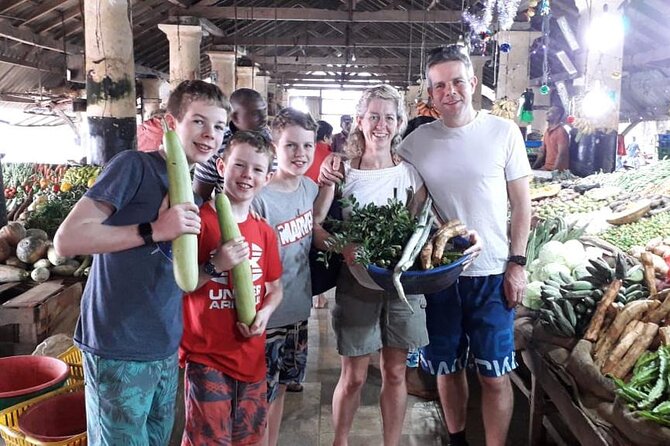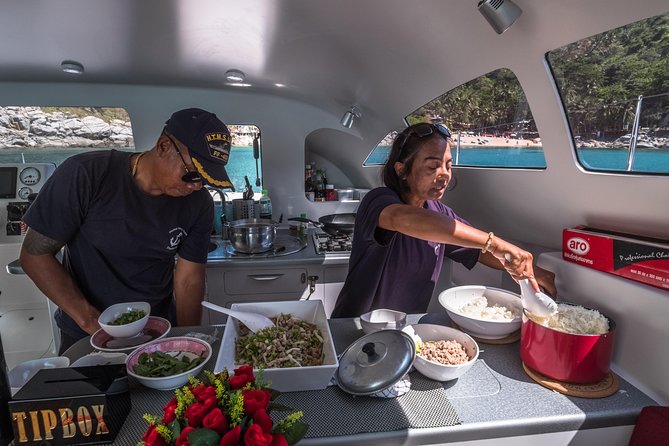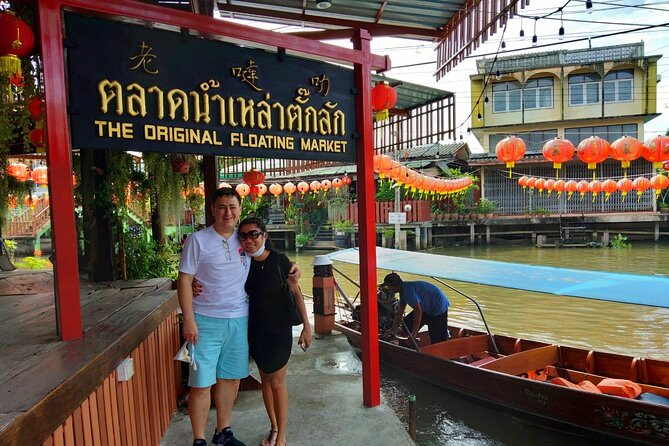The Sri Lanka Cooking Class by AGS offers an immersive culinary experience for those looking to explore the vibrant flavors of Sri Lankan cuisine. Located in Kandy, this cooking class provides a unique opportunity to learn traditional recipes from expert local chefs.
Participants can expect to create delicious dishes that showcase the rich heritage and diverse flavors of Sri Lanka. Whether you’re a novice cook or a seasoned food enthusiast, this hands-on experience will tantalize your taste buds and deepen your understanding of Sri Lankan cuisine.
Key Takeaways

- Sri Lankan cuisine is influenced by Indian, Arab, Malay, and Dutch cultures.
- Spices and coconut are essential ingredients in Sri Lankan cooking.
- Rice is the staple food, and traditional ingredients include tropical fruits and vegetables.
- Sri Lankan cuisine offers a mix of familiar and unique flavors, catering to both bold and milder tastes.
History and Origins of Sri Lankan Cuisine

The history and origins of Sri Lankan cuisine can be traced back to ancient times, with influences from various cultures throughout the centuries. Sri Lanka’s geographical location in the Indian Ocean has made it a melting pot of culinary traditions and flavors. The cuisine is heavily influenced by Indian, Arab, Malay, and Dutch cultures, resulting in a unique blend of spices, ingredients, and cooking techniques.
One of the key elements of Sri Lankan cuisine is the use of spices. From fiery chili peppers to aromatic curry powders, spices play a central role in creating the bold and flavorful dishes that the country is known for. Coconut also features prominently in Sri Lankan cooking, whether it’s in the form of coconut milk, grated coconut, or coconut oil.
Rice is the staple food of Sri Lanka and is typically served with a variety of curries, sambols (spicy relishes), and chutneys. Seafood, including fish, prawns, and crabs, is widely consumed due to the country’s coastal location. Vegetarian options, such as dhal (lentil curry) and vegetable curries, are also popular.
Overall, Sri Lankan cuisine is a vibrant reflection of the country’s rich history and diverse cultural influences, offering a tantalizing journey for the taste buds.
Traditional Sri Lankan Ingredients and Spices
Sri Lankan cuisine tantalizes the taste buds with its vibrant flavors, thanks to the unique blend of traditional ingredients and spices from various cultures throughout the centuries. The island’s rich history and geographical location have influenced its culinary traditions, resulting in a diverse and flavorful cuisine.
Traditional Sri Lankan ingredients include rice, coconut, and an array of tropical fruits and vegetables. Spices play a crucial role in enhancing the flavors of Sri Lankan dishes, with favorites like cinnamon, cardamom, cloves, and nutmeg adding warmth and depth. The cuisine also features a range of chili peppers, from mild to fiery, that add a spicy kick to many dishes.
These traditional ingredients and spices are used in a variety of dishes, from rice and curry to hoppers and roti, creating a culinary experience that’s both familiar and unique. Whether you’re a fan of bold flavors or prefer milder tastes, Sri Lankan cuisine has something to offer everyone.
Step-by-Step Cooking Techniques in Sri Lanka
.jpg)
Using a combination of chopping, sautéing, and simmering, cooks in Sri Lanka create flavorful dishes step-by-step. These cooking techniques are integral to the traditional cuisine of Sri Lanka and are passed down through generations.
Here are four key steps in the cooking process:
- Chopping: The first step involves carefully chopping the ingredients, such as onions, garlic, and spices, to release their flavors and aromas.
- Sautéing: Once the ingredients are chopped, they’re gently sautéed in hot oil or ghee to enhance their flavors and create a rich base for the dish.
- Simmering: After sautéing, the ingredients are combined with liquid, such as coconut milk or broth, and simmered over low heat. This allows the flavors to meld together and the dish to develop its signature taste.
- Slow Cooking: Many Sri Lankan dishes benefit from slow cooking, which allows the flavors to intensify and the ingredients to tenderize. This step ensures that the final dish is bursting with flavor and has a melt-in-your-mouth texture.
Signature Dishes of Sri Lanka
.jpg)
Tourists flock to Sri Lanka to savor the authentic flavors of the signature dishes that the local chefs whip up in their kitchens. Sri Lanka is known for its rich and diverse culinary heritage, influenced by Indian, Malay, Arab, and Dutch cuisines.
One of the most famous signature dishes is ‘rice and curry,’ a flavorful combination of rice served with various curries, including fish, chicken, or vegetable.
Another must-try dish is ‘hoppers,’ a crispy pancake made from fermented rice flour and coconut milk, often served with a spicy sambal.
‘Kottu roti’ is also a popular choice, consisting of shredded roti bread stir-fried with vegetables, eggs, and spices.
And of course, no visit to Sri Lanka is complete without sampling the mouthwatering ‘string hoppers,’ thin rice noodles steamed and served with a variety of curries.
These signature dishes truly capture the essence of Sri Lankan cuisine and are sure to delight any food lover’s palate.
Vegetarian and Vegan Options in Sri Lankan Cooking
.jpg)
Local chefs in Sri Lanka actively incorporate vegetarian and vegan options into their cooking, providing a diverse and flavorful experience for those seeking plant-based meals. This culinary trend reflects the growing demand for vegetarian and vegan dishes in the country. Here are four reasons why Sri Lankan chefs are embracing vegetarian and vegan cooking:
- Cultural heritage: Sri Lanka has a rich culinary tradition that includes a variety of vegetarian and vegan dishes. Chefs are proud to showcase these traditional recipes and adapt them to suit modern tastes.
- Health-consciousness: Many Sri Lankans are adopting vegetarian and vegan diets for health reasons. Chefs are responding to this trend by creating nutritious and delicious plant-based dishes that cater to these dietary preferences.
- Sustainability: Sri Lanka is known for its abundant produce, including a wide variety of fruits, vegetables, and spices. Chefs are making use of these local ingredients to create innovative vegetarian and vegan dishes that aren’t only tasty but also sustainable.
- International influence: With the rise of global travel and international cuisines, Sri Lankan chefs are incorporating vegetarian and vegan cooking techniques and flavors from around the world. This fusion of culinary traditions creates unique and exciting plant-based dishes that cater to a diverse range of tastes.
Exploring Sri Lankan Street Food Delights
.jpg)
Roaming through the bustling streets of Sri Lanka, one can discover an array of tantalizing street food delights, such as mouth-watering hoppers and fragrant kottu roti.
Sri Lankan street food is a vibrant and diverse culinary experience that showcases the country’s rich cultural heritage and unique flavors. From savory snacks like samosas and vadais to sweet treats like falooda and jaggery-based desserts, there’s something to satisfy every palate.
The streets are lined with food stalls and carts, each offering their own specialties and secret recipes passed down through generations. The aroma of spices fills the air as vendors expertly whip up dishes right in front of customers, creating a sensory feast for the senses.
Whether you’re a seasoned foodie or just a curious traveler, exploring Sri Lankan street food is an adventure not to be missed.
Tips and Tricks for Mastering Sri Lankan Flavors
An easy way to enhance your Sri Lankan cooking skills is to experiment with different spices and ingredients, as they can greatly influence the flavor profile of traditional Sri Lankan dishes.
Here are four tips and tricks to help you master Sri Lankan flavors:
- Start with the basics: Get familiar with the key spices used in Sri Lankan cuisine, such as cinnamon, cardamom, cumin, and turmeric. These spices form the foundation of many Sri Lankan dishes and can add depth and complexity to your cooking.
- Balance the flavors: Sri Lankan cuisine is known for its balance of sweet, sour, spicy, and savory flavors. Experiment with different combinations of these taste elements to create a harmonious and well-rounded dish.
- Use fresh ingredients: Sri Lankan cooking relies heavily on fresh and locally sourced ingredients. Opt for fresh herbs, vegetables, and seafood to achieve the authentic flavors of the cuisine.
- Don’t be afraid to experiment: Sri Lankan cuisine offers a wide range of flavors and dishes. Don’t be afraid to try new recipes and techniques, and adapt them to suit your own preferences. The more you experiment, the more you’ll learn and master the art of Sri Lankan cooking.
Frequently Asked Questions
Are Pickup and Return Journeys Included in the Sri Lanka Cooking Class by Ags?
No, pickup and return journeys are not included in the Sri Lanka Cooking Class by AGS. The class provides free pickup, but the return journey is not covered. The pickup is provided by Kandy Cooking Class by AGS.
Is the Cooking Class Wheelchair Accessible?
The cooking class is not wheelchair accessible. Participants should keep in mind that the class is near public transportation and is a private tour/activity where only their group will participate.
Is the Cooking Class Located Near Public Transportation?
Yes, the cooking class is conveniently located near public transportation. Guests can easily access the class using public transportation options, making it accessible and convenient for all participants.
Will There Be Other Participants in the Cooking Class, or Is It a Private Tour/Activity?
The cooking class is a private tour/activity, meaning that only the participant’s group will be participating. There will not be any other participants in the class.
What Is the Cancellation Policy for the Sri Lanka Cooking Class by Ags?
The cancellation policy for the Sri Lanka Cooking Class by AGS states that a full refund is available if canceled up to 24 hours in advance. No refund is given for cancellations less than 24 hours before the start time.
The Sum Up
To sum it up, the Sri Lanka Cooking Class by AGS offers a unique and immersive culinary experience for those looking to explore the vibrant flavors of Sri Lankan cuisine. With expert local chefs, authentic ingredients, and hands-on cooking techniques, participants can create delicious dishes that showcase the rich heritage and diverse flavors of Sri Lanka. Whether you’re a novice cook or a seasoned food enthusiast, this cooking class promises to tantalize your taste buds and deepen your understanding of Sri Lankan cuisine. Don’t miss out on this opportunity to embark on a culinary journey filled with aromatic spices and the warmth of Sri Lankan hospitality.
If you’re interested in exploring other Asian cooking classes, there are several options available. For a half-day experience in Cambodia, you can try the Khmer Cooking Class in Krong Siem Reap, where you’ll learn to prepare traditional Khmer dishes in a local’s home. Or, if you’re in Kyoto, Japan, you can join the Kyoto Bento Box Cooking Class and learn to make a traditional Japanese bento box meal.
For coffee lovers, the Hanoi Coffee Workshop in Vietnam offers a unique opportunity to learn about the different types of coffee and even make your own egg coffee. And if you’re in Tokyo, Japan, you can join the Traditional Japanese Cooking Class at Mayuko’s home and learn to make authentic Japanese dishes.
These are just a few examples of the many cooking classes available in Asia. Each offers a unique cultural experience and the chance to learn new cooking techniques and recipes. So, whether you’re interested in Khmer cuisine, Japanese cooking, or Vietnamese coffee, there’s a cooking class out there for you. Explore the diverse flavors of Asia and enhance your culinary skills with these immersive cooking experiences.






